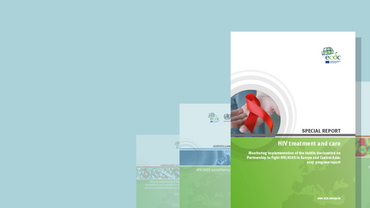HIV/AIDS surveillance in Europe 2023 (2022 data)
This report presents HIV/AIDS surveillance data for 2022, a year marked by increased population movements across Europe that have had an impact on HIV trends, particularly in European Union/European Economic Area (EU/EEA) countries. In addition to the increased movement of people, the post-COVID-19 recovery of health services and surveillance activities, and the scale-up and introduction of novel testing strategies in many countries resulting in the identification of previously undiagnosed cases, led to a significant rise in HIV diagnoses across the Region.
Executive Summary
In 2022, 37 of the 49 countries in the Region, including 26 in the EU/EEA, reported an increase in HIV diagnoses compared to 2021, with some countries reporting record-high numbers in a single year.
In 2022, 110 486 HIV diagnoses were reported in 49 of the 53 countries in the Region, including 22 995 from the countries of the EU/EEA. This corresponds to a crude rate of 12.4 HIV diagnoses per 100 000 population in the Region overall, a slight increase on the rate for 2021 (11.9 per 100 000 population). However, this represents a substantial decrease on the rate for 2019 (15.6 per 100 000 population), which was the period before the COVID-19 pandemic.
Download








